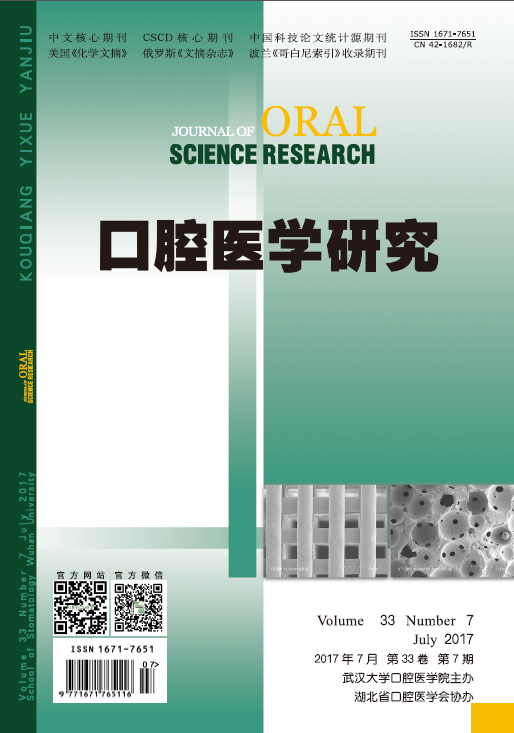|
|
Study on Prevalence and Risk Indicators for Peri-implant Disease.
LI Wei-ting,PIAO Mu-zi,LI Hui, ZHANG Yi, ZHOU Hui, HU Hong-cheng, TANG Zhi-hui, LI Peng.
2017, 33(7):
758-761.
DOI: 10.13701/j.cnki.kqyxyj.2017.07.017
Objective: To evaluate the prevalence of peri-implant disease and identify the risk indicators for peri-implantitis in Chinese population. Methods: One thousand six hundred and twelve implants in 736 patients were enrolled which were placed and restored in the second dental center of Peking University School and Hospital of Stomatology, mean loading period (22.64±0.92) months. The periodontal parameters including plaque index (PLI), probing depth (PD), bleeding index (BI), keratinized gingiva width (KGW), residual cement, and bone resorption were recorded. Full mouth periodontal examinations were investigated including PD, BI, and missing teeth. The diagnosis of peri-implantitis and peri-implant mucositis were according to the definition in the consensus report of the Seventh European Workshop on Periodontology. Periodontal status around implants was compared among different implant systems and different loading periods. The associations between PLI, PD, BI, KGW, cement around implant, periodontal status of residual teeth, missing teeth, and peri-implantitis were analyzed by logistic regression. Results: Peri-implant mucositis (bleeding on probing (BOP) and no bone loss) occurred in 81.90% of the subjects and 83.60% of the implants. Peri-implantitis (BOP and bone loss) occurred in 4.50% of the subjects and 3.70% of the implants. The prevalence of peri-implantitis showed no significant difference among Straumann, Bicon, 3i and Nobel Replace system. The prevalence of peri-implantitis in group loading 0.5-1 year and 5-7.5 years were significant lower than those in groups loading1-2, 2-3, 3-4, and 4-5years (P<0.05). In the multivariate analysis, missing teeth, mean PD round implant, and mean BI round implant were significant risk indicators for peri-implantitis, after adjusting gender, age, smoking, residual cement, and KGW. Conclusion: The prevelence of peri-implant mucositis was high, the prevelence of peri-implantitis was not increased according to the extension of loading period. It is important to control the probing depth and bleeding on probing around implant to avoid peri-implantitis.
References |
Related Articles |
Metrics
|

